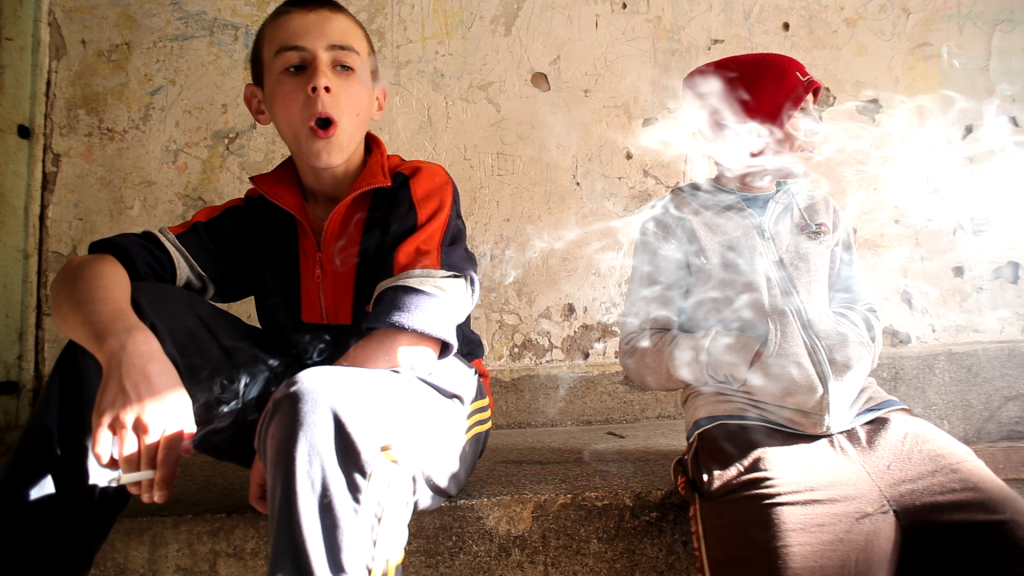
What role can the visual arts play in public health? How can a nation recover from mental health trauma when there are not enough psychologists and psychiatrists to support them?
What role can the visual arts play in public health? How can a nation recover from mental health trauma when there are not enough psychologists and psychiatrists to support them? In part III of our ongoing publication series exploring Post-Traumatic Stress Disorder (PTSD) and the visual arts, registered nurse Bruce Clezy discusses the topic of transgenerational trauma. To begin at part I of this series, click here.
What is transgenerational trauma?
Transgenerational trauma (also known as intergenerational, multigenerational or cross-generational trauma) is the process by which the traumatic experience of one generation can be transferred to a second or even third generation. In cases of transgenerational trauma, children and grandchildren find themselves experiencing symptoms or “living out” certain experiences of the first generation and the original traumatic incident (de Mendelssohn, 2008). This process of transmission is largely seen as unconscious, i.e., parents do not intend to pass on the trauma to their offspring. It is important to note that transgenerational trauma is very different from the trauma one can experience when caring for someone one who has undergone a massive traumatic event (e.g., caregiver trauma, caregiver burden) (Kellermann, 2001). Transgenerational trauma is recognized as a serious consequence of such traumatic events as war, inter-ethnic conflict, genocide, slavery, rape, colonialism and natural and unnatural disasters. In terms of public health, transgenerational trauma is understood to severely impede both an individual’s and a community’s ability to heal, function and prosper for generations to come.
How was transgenerational trauma first discovered?
Much of our understanding of transgenerational trauma comes from studies of children of survivors of the Holocaust, particularly the work of Yael Danieli. In the late 1960s, Danieli set up a treatment center in New York for the treatment of Holocaust survivors and their children. To her astonishment, she found that, universally, all of her patients had never been listened to about their experiences in the concentrations camps, even by mental health professionals. Instead, their experiences had been treated with avoidance, denial, belittling and indifference. Their stories were just seen as too traumatic to be believed or discussed. Faced with what Danieli termed “the conspiracy of silence,” patients had no other choice but to withdraw into their families, making mourning impossible. Here, children absorbed or internalized the unreconciled grief and loss of their parents either through survivor stories (usually told by the spouse of the survivor) or by osmosis; the child growing up in bewilderment as to the inexplicable torment within the family and their own growing sense of guilt (Danieli, 1998).
What have we learned since then?
Since the early work on the Holocaust, a vast amount of research has been written about the nature and effects of transgenerational trauma. Children of American Vietnam veterans, for example, have been a huge source of interest as to the effects of war as one particular form of a traumatic event (Leiner, 2009). Similarly and much more recently, Daniel Schechter, through his study of families affected by the 2001 attacks on the World Trade Center, has shown how distressed children could trigger the PTSD of their surviving parent – a finding that suggests a much more dynamic, more reciprocal view of transgenerational trauma (Schechter, Coates & First, 2002). Further research has focused not only on how exactly transmission of transgenerational trauma takes place, but also the exact nature of the outcome (i.e., the effect on children and grandchildren). While initially it was thought that if a parent was experiencing some kind of PTSD, then, left untreated, their children were also likely to develop PTSD (as if a psychopathology were somehow infective). This thesis has largely shown to be untrue (Kellermann, 2001; Daniele, 1998). Today, however, research tends to emphasize the trauma response within the second generation. In other words, when faced with a new particularly life-threatening or stressful event, are children whose parents who suffered from trauma and PTSD more susceptible to developing PTSD themselves? Or, because of their parents’ influence, are they somehow more resilient?
Next up: Uspomene 677: the Transgenerational Trauma of Victims and Perpetrators (Part IV)
—
Selected Further Reading
Daniele Y. (ed). (1998). International Handbook of Multigenerational Legacies of Trauma. Boston, MA: Springer US.
de Mendelssohn F. (2008). Transgenerational transmission of trauma: guilt, shame, and the “heroic dilemma”. International Journal of Group Psychotherapy, 58 (3):389-401.
Kellermann N P F. (2001). Transmission of Holocaust trauma – an integrative view.Psychiatry, 64 (3): 256-267.
Leiner B. (2009) The legacy of war: an intergenerational perspective. Smith College Studies in Social Work, 79 (3-4): 375-91.
Schechter D S, Coates S W, First E. (2002). Observations of acute reactions of young children and their families to the World Trade Center attacks. Zero to Three, 22(3): 9-13.






